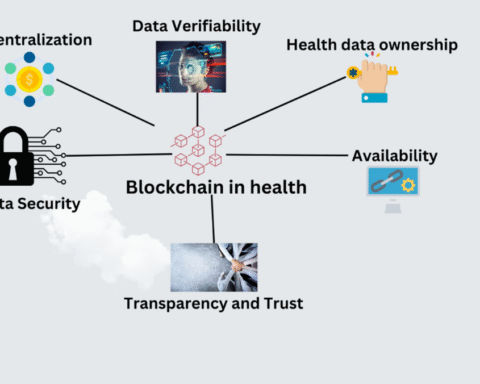Successfully implementing Dynamics 365 Finance and Operations (D365 F&O) is a significant milestone—but it’s not the end of your digital transformation journey. It’s only the beginning.
After go-live, businesses enter a critical phase: post-implementation. This stage determines whether your investment will continue to deliver value over time or slowly lose momentum due to system misalignment, underutilization, or lack of support.
The truth is, many challenges only surface once users begin operating in a live environment. That’s why sustained support, proactive optimization, and ongoing collaboration with your D365 implementation partner are key to long-term success.
Why Post-Implementation Support Matters
Implementing Dynamics 365 Finance and Operations streamlines processes, integrates data, and enhances financial visibility—but without structured post-go-live support, you risk:
● User adoption challenges
● Data integrity issues
● Unresolved bugs or misconfigurations
● Delayed upgrades and missed feature enhancements
● Growing reliance on workarounds or manual processes
To prevent these issues, organizations must adopt a proactive, structured support model that nurtures the system—and its users—long after go-live.
Key Pillars of Effective Post-Implementation Support
Let’s explore the essential components of a robust post-implementation support strategy for Microsoft Dynamics 365 Finance and Operations.
1. Hypercare and Immediate Stabilization
The first few weeks after going live are crucial. This “hypercare” phase is focused on system stabilization and user confidence. A strong D365 implementation partner will:
● Monitor system performance and user activity
● Address critical bugs or gaps not identified during UAT
● Provide on-demand support for troubleshooting
● Offer dedicated on-site or virtual assistance for high-priority issues
This phase sets the tone for adoption and trust in the platform.
2. Ongoing User Training and Change Management
Training during implementation is never enough. Post-go-live, users need reinforcement to master real-world scenarios. Continued training helps:
● Strengthen user confidence and reduce dependency on IT
● Clarify new features or process changes from recent updates
● Address knowledge gaps in newly onboarded team members
● Improve productivity through tips, shortcuts, and role-based best practices
Ongoing enablement ensures that Dynamics 365 Finance and Operations becomes a driver—not a distraction—for your teams.
3. Functional and Technical Support Desk
Even well-implemented systems require continuous support. Establishing a structured support desk allows users to report and resolve issues quickly. Your support desk should cover:
● Incident and problem management
● SLA-based response and resolution timelines
● Escalation pathways for critical issues
● Functional queries (e.g., workflows, journal entries, approvals)
● Technical concerns (e.g., integrations, performance, APIs)
A reliable support system helps reduce downtime and maintain business continuity.
4. System Optimization and Enhancements
Post-implementation, your business will evolve—and your ERP should evolve with it. Partnering with a proactive D365 implementation partner helps you:
● Optimize performance by removing redundant customizations
● Identify underutilized features or modules
● Reconfigure processes to support new business needs
● Improve workflows based on user feedback
These continuous improvements ensure Dynamics 365 Finance and Operations stays aligned with your strategic goals.
5. Staying Current with Microsoft Updates
Microsoft regularly releases updates for Dynamics 365, including new features, security patches, and performance enhancements. However, many businesses struggle to keep up.
A strong post-implementation support model includes:
● Monitoring Microsoft’s release wave schedules
● Evaluating the impact of updates on customizations and integrations
● Testing updates in a sandbox environment
● Managing the update process and user communication
This helps you benefit from the latest capabilities without introducing risk.
6. BI and Reporting Enhancements
Once your system is live, data becomes a powerful asset. However, many organizations underuse reporting tools after implementation. Post-go-live support should include:
● Building or optimizing dashboards in Power BI
● Enhancing financial and operational reporting
● Creating custom KPIs and metrics aligned to business goals
● Enabling self-service analytics for non-technical users
These insights turn Dynamics 365 Finance and Operations into a decision-making engine—not just a transactional platform.
7. Strategic Roadmapping and Expansion
Beyond daily support, your D365 implementation partner should act as a strategic advisor—helping you scale, expand, and innovate with the platform.
This includes:
● Evaluating the need for additional modules (e.g., Supply Chain, HR, Project Ops)
● Planning for multi-country rollouts or acquisitions
● Identifying opportunities to integrate Power Platform apps
● Reviewing licensing and user access models for cost optimization
A long-term roadmap ensures you extract maximum value from your D365 investment.
8. Governance, Compliance, and Audit Readiness
As regulations tighten and financial transparency becomes non-negotiable, your ERP must support compliance. Ongoing support helps:
● Maintain role-based security and segregation of duties
● Monitor audit trails and system logs
● Ensure data integrity and reporting compliance
● Prepare for external audits with confidence
Governance is not a one-time activity—it’s an ongoing need that post-implementation support must address.
Final Thoughts: Set Your Business Up for Ongoing Success
Implementing Dynamics 365 Finance and Operations is a major win—but your ROI depends on what happens next. Without continuous support, training, and system evolution, even the best implementation can lose value over time.
That’s why selecting a proactive, responsive D365 implementation partner is essential—not just for go-live, but for long-term success.
With the right support strategy, you’ll do more than just maintain your ERP—you’ll optimize it, evolve it, and turn it into a core engine of innovation and growth.
Read More Gorod








